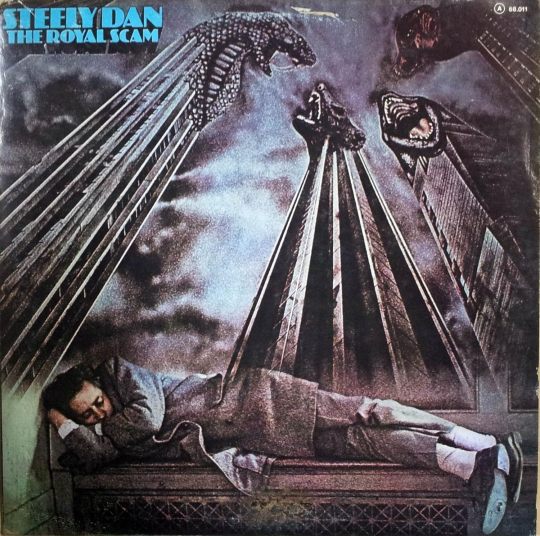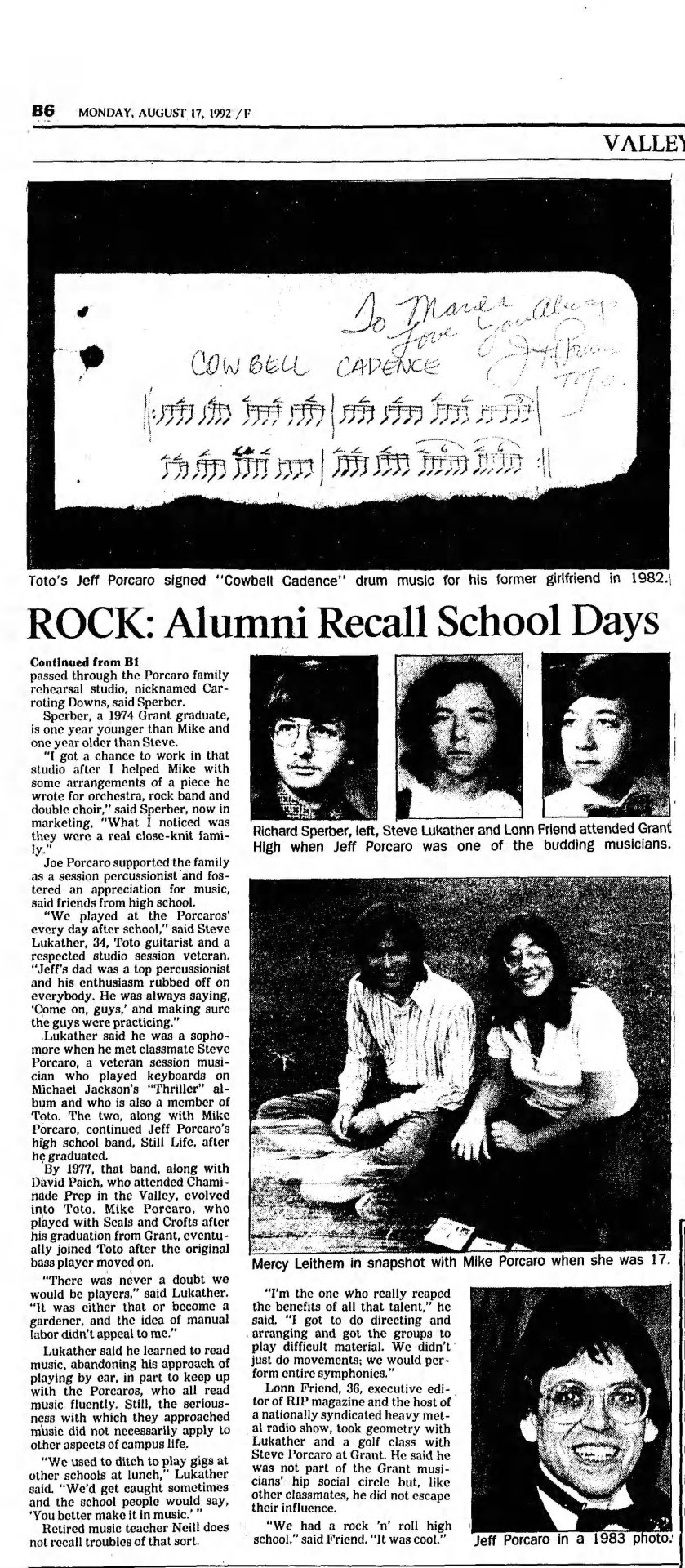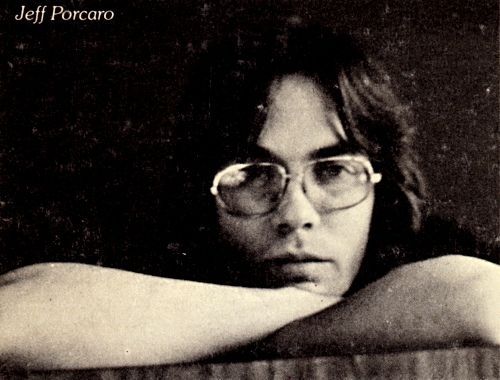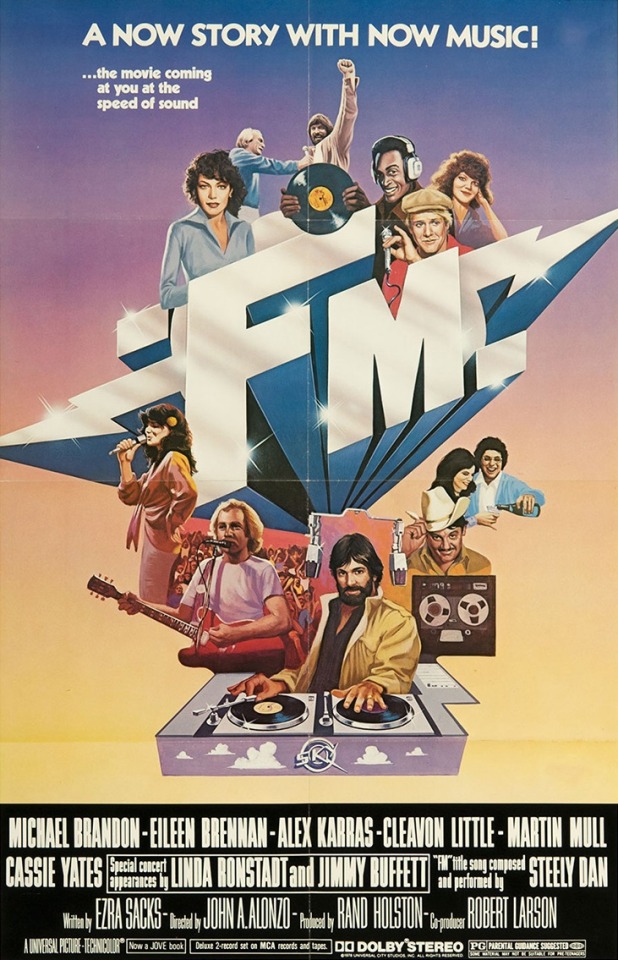#steelydan
Explore tagged Tumblr posts
Text

What're you listenin' to these days?
#33rpm#buddyandjuliemiller#davealvin#hifi#lp#music#nowplaying#nowspinning#records#recordcollection#rockandroll#steelydan#talkingheads#turnitup#vinyl#vinylcollection#vinylcollectionpost#vinylcommunity#vinyllove#vinylporn#vinyltx
9 notes
·
View notes
Text

The Studio
“Hey Nineteen” (1980) Steely Dan MCA Records (Written by Walter Becker and Donald Fagen) Highest U.S. Billboard Chart Position – No. 10
"From noon till six we'd play the tune over and over and over again, nailing each part. We'd go to dinner and come back and start recording. They made everybody play like their life depended on it. But they weren't gonna keep anything anyone else played that night, no matter how tight it was. All they were going for was the drum track.” - Jeff Porcaro, Musician
Like a python wrapping itself around the beating heart of Rock and roll more and more tightly, this was the last charting single for the last album in Steely Dan’s classic period (it would be 20 years until they would release another album, Two Against Nature, in 2000). The stories of their recording methods reinforce this metaphor: what was once a real touring band of musicians had whittled itself down to just Becker and Fagen rehearsing the best artists in the world over and over and over again to achieve an exactness and fidelity that has never really been matched. I remember “Hey Nineteen” charting in 1980; it was right there on the radio beside Blondie’s “Call Me” and Olivia Newton-John’s “Magic”, playing nice but certainly not fitting in. They played it over and over again, a kind of spiritless meditation on something my teenage brain could never parse (The Cuervo Gold? The Fine Columbian?). Even today it is the kind of song one can never get to the center of, the smoothest track in the middle of the road: slick, perfect, and eternal. Like all of their hits it stuck around to sell a lot of copies but never really went to the top of the charts (one of the most successful bands ever to have never achieved a No. 1 anything).
Today some folks call this Yacht Rock (a term I mildly dislike as generic) which is ironic considering it is hard to imagine these two city slickers anywhere near a boat, or even in the wild. I can only ever see them in the studio playing mad scientist with the idea of fidelity. This much I know: I have a decent turntable setup and nothing touches Gaucho for sound quality—1979 is at the top of the top for the old idea of a great studio record. The only vinyl record that may top it is Fleetwood Mac’s Tusk or Dan’s own Gaucho. This is the result of all that squeezing: what starting out at a very high level with Can’t Buy a Thrill (their debut in 1972) only got more and more refined with every album. By the time one gets to Gaucho (after the lush but boozy hangover and strung-out feeling of Aja) there is a kind of plateau-ing, a linear quality, to all of the rehearsing and perfecting and playing every note until it almost fails to exist. Don’t get me wrong, this is a record I love—but at a distance, because it was constructed to keep you there.
There are so many legends surrounding the LP: that it was (up to that point) the most expensive ever made (over a million 1979 dollars); that it was heavily delayed by the band’s perfectionism (it took well over a year to record); that is was surrounded by tragedy and drug use (a terrible car accident for Becker, 6 months of hospitalization, his heroin addiction, and the death of his girlfriend). The hyper focus of Fagen and Becker, rehearsing musicians to exhaustion to get every note perfect, included their famous engineer Roger Nichols (formerly a nuclear physicist!) who was given $150,000 of the budget to create a computer that could process the live drum sounds for them to manipulate exactingly (he named it Wendel and the RIAA bestowed the machine its own framed, platinum copy of Gaucho in acknowledgement). There was the three-way legal battle between MCA, Warner Brothers and Steely Dan to actually release the thing (their original label, ABC Records, had been acquired by MCA). Lastly there was the sign of the times in the new “Premium Pricing” by MCA, a hike in album prices from $8.98 to $9.98 for the more expensively-produced records (I guess) which included Tom Petty & The Heartbreakers Hard Promises and the soundtrack for Xanadu, although I am not sure it ever went into effect after a lot of bad press. One legend that seems plainly true is that this year was one of the last for huge, expensive, lavishly-produced studio records. Like the old Hollywood system, it simply could not hold any more, and something leaner was right around the corner; if not inevitable, then necessary to move the art form forward.
Maybe this is the reason that “Hey Nineteen” sounded so anachronistic that year: it was by then a hologram from that ever-distant land of the 70s long player, richly produced, genre-defying, Empyrean, graceful. Go on to an internet message board or read any history of Steely Dan and you will find there the endless jabber about their relative goodness or badness in the great cause of Rock Music, by jazzing it up, or slimming it down, or mellowing it out, or squeezing it too hard in rehearsals (Gaucho is deliciously given one star by Dave Marsh in The Rolling Stone Record Guide, 1983) but trust me: pay them no mind. Just drop the needle, rejoice in the cleanest sound in stereo ever attempted by anyone anywhere, and spend time with some of the best musicians who have ever lived.
-
Roger Nichols, after being with the band as a peerless sound engineer for over 30 years (and on all of their 7 classic-period albums), was unceremoniously let go during the middle of recording of Everything Must Go, right after the disaster of 9-11. His wife Connie described it as an “emotional dagger to his heart and soul” and him as heartbroken. No definitive reason seems to be well known. Nichols sadly passed away in 2011 of pancreatic cancer at the age of 66.
Right before the pandemic Connie found a clear cassette in Nichols’ things marked “The Second Arr” in black Sharpie pen (she had never had the heart to throw away anything with his handwriting on it). This turned out to be a copy of a very famous lost master track from Gaucho, “The Second Arrangement”, which after months of recording and $80,000 invested, and complete, was accidentally taped over by a second engineer (whew - poor guy). This tape was from the night before that event. Fagen and Becker considered re-recording it, but being absolute perfectionists, they realized it was hopeless and moved on.
Connie Nichols waited out the pandemic to have the tape professionally converted, fearing it would fall apart. Later, another (even better) copy, a DAT tape, was discovered by her. It can be heard here (most clearly in the second post, clocking in at 5:46) from the substack Expanding Dan. It is rather wonderful.
13 notes
·
View notes
Text

This album cover art is still as relevant today, if not more so, than back when the album was made.
3 notes
·
View notes
Text
This Genius Skunk Can Really Play

Don’t ask guitarist/producer Jeff Baxter how he got his nickname, ‘Skunk’. He won’t ever tell you. It's not that he doesn't like the name, he just doesn’t want to tell. It’s his secret to keep and he can definitely keep a secret just ask the US Navy One day, roughly 45 years ago, I was looking at the back of The Best of the Doobies album. Definitely one of the stellar greatest hits collections in American pop music history. On the back of the album is a typical group picture. It’s the 1976 version of the Doobies and one of the members stuck out to my wise-ass teenage mind. I kidded my sister’s boyfriend, Gary, about the guy at the left end of the picture, with the snakeskin cowboy boots. “What kind of boots are THOSE?” “And those tight pants?” “This guy looks like a freak,” my inexperience on full display.

Gary tells me, “If you are as badass as Jeff “Skunk” Baxter, you can wear whatever you want.” I was a Doobie Brothers fan at the time, everyone was. But I was unaware of Jeff Baxter and his history. In 1976 it was rare to see a rock band on TV so I hadn't caught him in action yet.
Seated?

I did eventually catch the Doobies on TV and noticed Baxter because he performed while seated on a stool. He had headphones and dark sunglasses on. His long hair and walrus mustache flowed as he jammed flawlessly. He was uniquely cool. It is said that Jim Henson, of Muppet fame, designed a rocker puppet based on Jeff’s look to play along with Animal! The Muppet's name is Floyd. I was unaware that I had already heard Jeff Baxter's guitar work many times on the radio. Baxter was a founding member of Steely Dan. Now it was all making sense. Again it was Gary who turned me on to a song called “Peg” by Steely Dan. My rock and roll heart wasn’t ready for Steely Dan at that time. It was years later that my appreciation came for these masters. Baxter’s stint in Steely Dan ended up being very advantageous for the Doobie Brothers. It was through Steely Dan that Baxter met a singer/keyboard player named Michael McDonald. Baxter recommended McDonald to the Doobies when leader Tom Johnston left the group. https://www.youtube.com/watch?v=RpaIfCY79gc One of the most memorable Doobie TV performances around this time is from Soundstage
Musical Success
The addition of McDonald to the Doobie Brothers brought a string of hit records and a new sound. Thanks to Baxter’s recommendation, the band had new life! Baxter was inducted into the Rock and Roll Hall of Fame in 2020 as a member of the Doobies. Jeff “Skunk” Baxter’s music career is considered a smashing success! At 75 years old, he can look back and see evidence of his greatness all over music. As a bandmate, a session player or producer, Baxter did it all! However his music career is NOT the story I want to tell.

The fascinating story of Jeff "Skunk" Baxter is his life OUTSIDE of the music business. The impetus for this post is my discovery of Baxter’s first solo album Speed of Heat, released in 2022 (it is extraordinary, by the way). This spurred me to, once and for all, get to the bottom of Baxter’s “day jobs”. Actually he has multiple day jobs as a consultant on ballistic missiles systems and counterterrorism among other ‘secret agent’ duties. This fact has confused me ever since I heard it mentioned years ago. Once I learned about Baxter’s early life and achievements, it became apparent, almost destined, that he would become much more than a rock star. From starting classical piano lessons at five to learning Spanish at age 9, after his family moved to Mexico City, the young Baxter was a prodigy. This is about the time a young ‘skunk’ first picked up a guitar. Baxter was and continues to be an eager lifelong student with an insatiable appetite for learning.
The Birth Of A Genius
When he was just 10 years old, he was playing in a little Mexican rock and roll combo. It was 1958, rock and roll was in it’s infancy but the young Baxter was absorbing all the music. He was especially fond of surf-rock pioneers, The Ventures. (Baxter’s amazing life came full circle when he produced a Ventures record). His love of the guitar and natural curiosity caused him, like many guitar-heads, to take apart his guitar and learn how it worked. This helped him later in his teens when he began working part-time in Manhattan for legendary guitar maker Dan Armstrong.
The Birth Of A Musician
The young, brilliant Jeff Baxter turned to music full time after he spent a year in New England at the University’s School of Communication. He joined a psychedelic folk-rock band Ultimate Spinach in 1968. Two years later his guitar playing was featured on a recording by Tim Buckley and Linda Hoover that recently resurfaced. This song was written by Walter Becker and Donald Fagen. These two future Steely Dan founders were impressed with Baxter’s guitar chops. After a move to Los Angeles, Steely Dan was born with Baxter onboard on guitar. That debut album “Can’t Buy a Thrill” drew a lot of attention. Scoring Baxter many, many jobs as a studio musician. In 1974, he left Steely Dan for the Doobies where he remained until 1979.
Finally...the story
Somewhere around this time is when our story takes a severe turn. Baxter was helping a neighbor in Los Angeles dig out from a mudslide. This neighbor was a retired engineer who helped design the Sidewinder missile for the US Navy. As a thank you for his mudslinging, this neighbor gifted Baxter subscriptions to Aviation Week and Janes Defense. Baxter took to these publications and found his interests pointing to missile defense systems. This began a deep-dive that lasted years and resulted in Baxter writing a paper proposing a conversion of the military’s Aegis plane defense program. How does a musician, no matter how brilliant, go from playing and producing music to designing a missile defense system?
CDs and Defense Missiles
It was the early 1980s and the music industry was changing from analog to digital! A producer with the curiosity of “Skunk” would have learned all he could about digital compression and how to manipulate it. His deep-dive into the new technology opened up a new world and stimulated him to imagine applying the technology to other scenarios. He married this knowledge with what he was studying in defense missile systems and the result was a technical paper. Baxter shared the paper with a California congressman friend of his, Dana Rohrabacher, who shared it with the chair of the House Military Research and Development Subcommittee. This must have made an impact because in 1995 Baxter was nominated to chair the Civilian Advisory Board for Ballistic Missile Defense.
Many Jobs
The rocker who sits and plays beautifully, whose likeness is borrowed by a Muppet, is indeed working for the government and he CANNOT discuss any of it with you. This was only the beginning for ‘Secret Agent” Skunk. The government then asked Baxter to lead enemy forces in war game simulations. When pressed, Baxter will reveal his other affiliations over the years. He is a consultant for the Global Security Sector of the Lawrence Livermore National Laboratory, a member of the Director’s Strategic Red Team at MIT Lincoln Laboratories and a Senior Thinker for the Institute for Human & Machine Cognition. He is also the chairman of the Civilian Advisory Board for Ballistic Missile Defense for the Potomac Institute for Policy Studies.

Rebecca Sapp Getty Images for The Recording Academy
More Jobs
In between guitar solos, Hall of Fame Inductions and winning 2 Grammys, Baxter has worked as a consultant for Northrop-Grumman, Science Applications International Corporation, Ball Aerospace, General Atomics Aeronautical Systems, Photon Research, General Dynamics Information Technologies, and other companies. He is also under contract with the Department of Energy, the Department of Defense among others. Jeff “Skunk” Baxter is a man of multiple talents. To the general public, he is more famous for his musical prowess than for his civic duty. To those in the National Defense realm, he is an invaluable American asset. It’s hard to decide which one benefits humanity more. One thing is for sure, we can hear and see the evidence of his musicality all over the airwaves. What he does in the dark corners of our military establishments is none of our business. Read the full article
0 notes
Text


Cavemanrobot's first Appearance in Oatmeal Journal #4 Chicago, IL 1996
#cavemanrobot#caveman robot#robot caveman#bell#robot#cartoon#art#greg cook#oatmeal journal#comic#steelydan
1 note
·
View note
Text

Jeff Porcaro
Jeffrey Thomas Porcaro was born on April 1st, 1954 in Hartford, Connecticut. He was the eldest son of the percussionist Joe Porcaro. He had two brothers, Steve and Mike, that would later play in the band Toto with him. They were raised in the San Fernando Valley area of Los Angeles, and Jeff attended Ulysses S. Grant High School.
Jeff began to play drums at the age of seven, getting lessons from his father. Later, he’d study under Bob Zimmitti and Richie Lepore. At the age of 17, Jeff got his first professional gig playing in Sonny and Cher’s touring band. He called Jim Keltner and Jim Gordon his idols during this time.
In his 20’s, he recorded on hundreds of albums. He toured with Boz Scaggs, before cofounding the band Toto with his brother Steve, and childhood friends Steve Lukather and David Paich.
Jeff became renown among drummers for the drum pattern on the song ‘Rosanna’. The song would later win a grammy. The pattern, called ‘The Half-Time Shuffle Groove’ was originally created by drummer Bernard Purdie, who called it the ‘Purdie Shuffle’. Jeff made his own version of the pattern by blending the Purdie Shuffle with the groove he’d hear in John Bonham’s work with Led Zeppelin, mainly the song “Fool In The Rain”, while keeping a Bo Diddley beat on the kick drum.

Jeff had worked with numerous artists. Very notably Steely Dan, but also: George Benson, Eric Clapton, Miles Davis, David Gilmour, Elton John, Don Henley, Donna Summer, Joe Walsh, Paul McCartney, and more than that!
On October 22nd, 1983, Jeff married Susan Norris, a TV broadcaster for KABC-TV. They had 3 sons, Christopher, Miles, and Nico.
Jeff died at Human Hospital-West Hills on the evening of August 5th, 1992, after falling ill, while spraying insecticide in the yard of his home. The coroner ruled out an accident and determined a heart attack due to occlusive coronary artery disease caused by atherosclerosis, resulting from cocaine. An LA county coroner spokesman, along with some doctors who treated him, attributed his death to a heart attack caused by an allergic reaction to inhaled pesticide. Bandmade Steve Lukather, and Porcaro’s wife stated that they believed that Jeff had also been suffering from a long standing heart condition, and a smoking habit, both of which contributed to his death. Lukather noted several members of Jeff’s family died at a young age, due to heart disease.





An article posted by the LA Times on August 8th, 1992, talked about how Jeff suffered a heart attack after a possible allergic reaction to a pesticide he was spraying in his yard. It is unknown what type of spray he was using. I don’t know if the brand or scientific name was ever revealed.
He may have possibly inhaled the spray, as authorities thought, at least pre-autopsy.


Paramedics were called to Porcaro’s home around 6:30pm. Witnesses stated that Jeff complained of feeling sick while doing yardwork.
LA county Fire Inspector Dennis Vlach stated that Jeff was in critical condition when they arrived on the scene. “There was no breathing, no pulse. He was in full cardiac arrest.”.
Rescue workers managed to briefly revive Jeff, who was taken by helicopter to Humana-Hospital-West Hills. He was pronounced dead at 8:30pm.
Jeff lived with his 3 kids and wife, Susan, who was mayor pro tem of Hidden Hills at the time.
Initially, newspapers stated that Jeff had passed away from an allergic reaction to a pesticide he was spraying in his yard. The story seems to be unclear, and has changed over the years, with the truth being rather elusive today. The Bangor Daily News posted that Jeff was spraying pesticide in the garden of his home, when he collapsed, an allergic reaction to the pesticide. Some sources state that the pesticide reaction caused a heart attack. His manager, Larry Fitzgerald, said that “He was doing a little yard work. The doctor believes that the pesticides somehow triggered an allergic reaction, and he suffered a cardiac arrest.”.
His wife and kids were home at the time. Jeff had just returned from a family vacation in Florida, and the band was scheduled to begin rehearsals for a tour in support of their recent release, “Kingdom of Desire”.


More than 1200, or 1600 according to some sources, people attended his funeral; including well known musicians like Don Henley, Eddie Van Halen, David Crosby, Graham Nash, and Jackson Browne. After his death, Jeff’s family asked that any donations be made to Grant High School, where Jeff had attended.

The Ashbury Park Press, among other sources, wrote that the Lost Angeles County coroner’s office ruled that Jeff’s death was caused by the hardening of the arteries, stemming from past cocaine use. His brother, among other people, rejected this. Mike Porcaro is quoted in the article saying, “Some public officials will say anything to get their name in the papers. Jeffrey was no angel, but he wasn’t an animal either. He had a heart condition that had nothing to do with drug abuse.”
A couple of other sources I have posted this :
“Who died of coronary problems linked to cocaine use.” [The Atlanta Constitution]
“Died from a heart attack that a coroner ruled was brought on by cocaine use, according to the Rolling Stone Encyclopedia of Rock and Roll.” [Press of Atlantic City]


A tribute concert was held for Jeff in December of 1992, the proceeds were to go towards an education fund for his songs. Many of Jeff’s friends and former bandmates showed up to play, such as Don Henley, Michael McDonald, David Crosby, Eddie Van Halen, Boz Scaggs, Donald Fagen, and a surprise guest appearance from George Harrison.

An article from the LA Times talked about the tribute, and brought up the circumstances of Jeff’s death. It stated that Jeff was initially thought to have a heart attack, triggered by an allergic reaction to pesticide he was spraying in his yard. The Los Angeles County Coroner’s report, found no traces of the pesticide, instead citing a history of cocaine use as causing hardened arteries. Small traces of cocaine were found in Jeff’s system. Susan, his widow, disputed the coroner’s conclusion. There was supposed to be a private autopsy done, that his wife wanted. Though it may have required exhuming Jeff’s body. One source states that the private autopsy could have used materials without exhuming the body, but, I never saw any update on this, or if it was even done.


The Morning Star posted on September 16th, 1994, that , “on the insistence of an insurance company, a further autopsy revealed that his death was related to the hardening of the arteries”, though the rest of the sentence was cut off. The Windsor Star posted on July 30th, 1998, that Jeff’s death was related to the hardening of the arteries stemming from cocaine use.
In a 1998 article from Sunday Mercury, David Paich is quoted as saying:
“There was so much rubbish talked about Jeff’s death. Like anyone else in the band who used it, he had stopped taking cocaine and partying by the time of his death. He was not addicted to cocaine.”. The article then went on to say that, “pathologists blamed Jeff’s death on the hardening of the arteries which they linked to years of cocaine use.”.
On April 24th, 2000, The Guardian posted an article about musicians that met tragic ends. Interestingly, they talked about Jeff, and said:
“One afternoon, while trying to install a barbeque in his backyard, Jeff embarked on one of his bug killing binges. All he wanted was a pest free lawn. But the endless onslaught of bumblebees, the whole brutal regime of pesky winged insects finally became too much for poor Jeff. So he went out and purchased a 10 gallon container of industrial strength pesticide. It all got a little out of control, and he more or less sprayed himself to death.”.

In 1998, Jeff’s widow remarried. She had moved to Florida to be closer to her own family soon after Jeff’s death.
An article by UPI, posted on September 4th, 1992, stated that the coroner’s toxicological report showed that Jeff died of heart disease, caused by long-time cocaine use, as stated by Coroner spokesman Bob Dambacher.
The autopsy found traces of cocaine in Jeff’s blood, along with benzoylecgonine, which is described as a metabolite, or byproduct of cocaine. The coroner’s report stated that the cause of death was determined “to be occlusive coronary artery disease, due to atherosclerosis, due to the effects of cocaine.”.
On Loudersound, the story is a little different. “Earlier in the day, of August 5th, 1992, Steve Lukather had spoken to Jeff on the phone about Toto’s upcoming tour. The conversation ended as it always did, with them telling each other, “I love you.”. Hours later, he got the call telling him that Jeff had been rushed to the hospital after suffering a seizure. In a state of panic, Lukather got lost while driving to the hospital.
“By the time I got there, Jeff was gone. A doctor took me to a room, and Jeff was lying there on a fucking slab. They left me in that room alone with him, and I freaked out. I was screaming. They had to give me smelling salts.”.
Lukather has angrily refuted allegations that Jeff overdosed on cocaine.
“It was irresponsible journalism. You know, the guy had a wife and kids. He did not die from a cocaine. I swear on all four of my children’s lives. They found one one-hundreth of a microgram of cocaine in Jeff’s blood/ That’s like 2 crystals on a fucking matchstick. That ain’t gonna give somebody a heart attack, believe me. The rest of us were doing a hundred times more than that and we all lived to tell the tale.”.
Lukather said that Jeff had a pre-existing heart condition, he was also a heavy smoker. This, is what Lukather believes led to the pesticide getting into Jeff’s system. “He was probably smoking a cigarette, or a joint. He didn’t have gloves on. That’s how the chemicals got into the skin.”
♣♣♣
I think, that in the least, there were elements in Jeff’s life that contributed to his death. A major contention would be smoking. Lukather said himself, that Jeff was a heavy smoker. I don’t understand why there has been this emphasis that the autopsy was wrong, or that the amount of cocaine was not enough. From all of the articles I found, I never saw anyone call Jeff a cocaine addict. There wasn’t any hint of disrespect. Of course, tabloids might have been disrespectful; but why would the autopsy lie?
Through all the articles, the coroner/medical examiner’s name was not mentioned once. The pesticides that Jeff supposedly used, were not mentioned by brand name, or scientific name, not once. It seems that the association of cocaine comes with a negative connotation, but one filthy habit, or moment of leisure, does not make up an entire person’s personality, or humanity.
Personally, I think that Jeff's achievements outweigh any negative connotations that his cause of death has. I don't see his death as anything shameful, it comes off to me as just another part of life. It's unrealistic to think that a famous musician never did any drugs; it's also unrealistic to believe that those drugs never affected any of those musicians either.
Just because some people "lived to tell the tale", doesn't mean that everyone will. Every person is different. Even the medical backgrounds for siblings can differ.
To me, Jeff's death was a conglomerate of things. Having used cocaine in the past, being a smoker, and having a family history of heart disease, made him prone to the hardening of the arteries. It's important to note that his cause of death is something that takes years to develop. August 5th, 1992 was just the breaking point.
I think that Jeff was a great musician. He seemed to be a natural fit when playing with Steely Dan, as Walter Becker and Donald Fagen were notorious for being meticulous with their work. Jeff was very much the same. One of my favorite Steely Dan songs is "Daddy Don't Live In That New York City No More", which Jeff played on. The album "Katy Lied" is a great show of his talent as a whole. With "Everyone's Gone To The Movies" as another great example of his work.
For me, I don't see any shame in how he died. I just wish that he could have stayed around a little longer.
"He was such a great drummer, and his personality really came out in his playing. He really changed the way people played the drums." - Donald Fagen
youtube
[SOURCES]
1 note
·
View note
Link
The 2024 Songwriters Hall of Fame Induction and Awards Gala wasn't just about inducting new members – it was a celebration of music's power to connect, inspire, and endure. Held on Tuesday night in New York City, the star-studded event welcomed R.E.M., Timbaland, Steely Dan, Hillary Lindsey, and Dean Pitchford into its prestigious ranks. Beyond the inductions, the evening saw emotional reunions, heartfelt speeches, and electrifying performances that paid tribute to the art of songwriting. R.E.M. and Timbaland Inducted A Celebration of Iconic Songwriters: R.E.M., Timbaland, and More The inductees themselves brought a wealth of musical history to the stage. R.E.M., the alternative rock band that soundtracked a generation with hits like "Losing My Religion" and "It's the End of the World as We Know It (And I Feel Fine)," surprised the audience with a reunion performance after 13 years. Jason Isbell, tasked with honoring the band, delivered a poignant introduction before performing a stirring rendition of "It's the End of the World..." that set the stage for the emotional reunion. Timbaland, the visionary producer known for his genre-bending beats and collaborations with artists like Aaliyah, Missy Elliott, and Justin Timberlake, received his due recognition. Missy Elliott, the first female rapper inducted into the Songwriters Hall of Fame five years ago, returned to the stage to honor her longtime collaborator. Timbaland's acceptance speech was a heartfelt tribute to the artists he's worked with, acknowledging their contributions to his success. Steely Dan, the legendary jazz-rock duo famed for their intricate compositions and witty lyrics, also received their induction. While Donald Fagen and the late Walter Becker couldn't attend, their longtime manager Irving Azoff shared humorous anecdotes about the band, and Trey Anastasio delivered a powerful performance in their honor. Rounding out the inductees were Hillary Lindsey, the prolific songwriter behind hits like Lady Gaga's "A Million Reasons" and Carrie Underwood's "Love Story," and Dean Pitchford, the Oscar-winning composer of "Fame" from the film of the same name. Both received touching tributes and performances of their iconic songs. Emerging Talent Honored: SZA Earns Special Recognition Beyond the inductions, the evening celebrated the future of songwriting. SZA, the critically acclaimed R&B singer-songwriter, received the Hal David Starlight Award, an honor recognizing young talent. Introduced by Songwriters Hall of Fame chairman Nile Rodgers, who took a stand against streaming platforms and their treatment of songwriters, SZA delivered an introspective speech. She spoke of the struggles and triumphs of her journey as an artist, highlighting songwriting as the core of her identity and value. Performing an acoustic version of her hit "Snooze" alongside collaborator Carter Lang, SZA solidified her place as a rising star with a bright future. A Night Filled with Performances and Tributes The evening wasn't all speeches and inductions. A star-studded lineup of artists took the stage to pay homage to the songwriters being honored. Kevin Bacon and his brother Michael performed "Footloose" in tribute to Dean Pitchford, Deniece Williams sang "Let's Hear It for the Boy" from the same film, and Andra Day delivered a moving rendition of a song by Diane Warren, who received the Johnny Mercer Award. Carrie Underwood and Keith Urban joined forces to celebrate the work of Hillary Lindsey with a medley of her co-written hits. Each performance served as a powerful reminder of the enduring impact of great songwriting. A Celebration of Songwriting's Legacy The 2024 Songwriters Hall of Fame Induction and Awards Gala was more than just an awards ceremony. It was a testament to the transformative power of music and the artistry of songwriting. From emotional reunions to powerful performances, the evening showcased the enduring impact these iconic songwriters have had on music and the lives of countless fans. It was a night that celebrated the past, present, and future of songwriting, leaving a lasting impression on all who witnessed it.
#CarrieUnderwood#DeanPitchford#DianeWarren#Flipkartproductpage#HalDavidStarlightAward#HillaryLindsey#JasonIsbell#KeithUrban#KevinBacon#MissyElliott#NileRodgers#R.E.M.#R.E.M.andTimbalandInducted#RealmeGT6#RealmeGT6camera#Snapdragon8sGen3#SongwritersHallofFame#SongwritersHallofFame2024#SteelyDan#SZA#Timbaland#TreyAnastasio
0 notes
Text

This week in 1978: The film FM premiered.
Trailer
📽️ https://youtu.be/VWLoisEiTP0 📺
🎪
The original CIRCUS Magazine Official Website is👇
🖥️ https://www.circusrockmag.com/dynamic-library 📱
#FM#Boston#Eagles#FleetwoodMac#Foghat#Foreigner#BillyJoel#Queen#BobSeger#SteelyDan#JoeWalsh#JimmyBuffett#LindaRonstadt#ReoSpeedwagon#TomPetty#70s#RockMusic#movie#film#CIRCUSMagazine#CIRCUS#JosephWorley
0 notes
Video
youtube
THE MIDNIGHT SPECIAL TV SHOW ON YOUTUBE REVIEW
0 notes
Text

What're you listenin' to these days?
#33rpm#georgeharrison#hifi#littlefeat#lp#music#nowplaying#nowspinning#records#recordcollection#rockandroll#rollingstones#steelydan#turnitup#vinyl#vinylcollection#vinylcollectionpost#vinylcommunity#vinyllove#vinylporn#vinyltx
1 note
·
View note
Text

All Music Guide
#allmusicguide#jazz#blues#music#quotes#encyclopedia#jazzstyles#smoothjazz#georgebenson#yellowjackets#steelydan#kennyg#larrycarlton#spyrogyra#therippingtons#1970s#1980s#fusion#jazzrock#roncarter#wesmontgomery#musician#radio#friendly#cool#sounds#funk#groove#rock#pop
0 notes
Text
art pure amazing art
makes me wish i had a maid to send home early
#in love with dad rock
0 notes
Text

Today on STSWV, heading to Denver for The Eagles and Steely Dan, haven’t been there in a gazillion years, any tips for sightseeing/eating?
Shooting The Shit With Vicki
Monday, Oct 2, 2023
Streaming Live @5ish PT on FB
Daily Toni Vincent & Peter and Paul
#comedy#Podcast#talk#talkshow#community#shootingtheshitwithvicki#Live#streaming#Denver#Travel#Vacation#TheEagles#SteelyDan
0 notes
Text
This Genius Skunk Can Really Play

Don’t ask guitarist/producer Jeff Baxter how he got his nickname, ‘Skunk’. He won’t ever tell you. It's not that he doesn't like the name, he just doesn’t want to tell. It’s his secret to keep and he can definitely keep a secret just ask the US Navy One day, roughly 45 years ago, I was looking at the back of The Best of the Doobies album. Definitely one of the stellar greatest hits collections in American pop music history. On the back of the album is a typical group picture. It’s the 1976 version of the Doobies and one of the members stuck out to my wise-ass teenage mind. I kidded my sister’s boyfriend, Gary, about the guy at the left end of the picture, with the snakeskin cowboy boots. “What kind of boots are THOSE?” “And those tight pants?” “This guy looks like a freak,” my inexperience on full display.

Gary tells me, “If you are as badass as Jeff “Skunk” Baxter, you can wear whatever you want.” I was a Doobie Brothers fan at the time, everyone was. But I was unaware of Jeff Baxter and his history. In 1976 it was rare to see a rock band on TV so I hadn't caught him in action yet.
Seated?

I did eventually catch the Doobies on TV and noticed Baxter because he performed while seated on a stool. He had headphones and dark sunglasses on. His long hair and walrus mustache flowed as he jammed flawlessly. He was uniquely cool. It is said that Jim Henson, of Muppet fame, designed a rocker puppet based on Jeff’s look to play along with Animal! The Muppet's name is Floyd. I was unaware that I had already heard Jeff Baxter's guitar work many times on the radio. Baxter was a founding member of Steely Dan. Now it was all making sense. Again it was Gary who turned me on to a song called “Peg” by Steely Dan. My rock and roll heart wasn’t ready for Steely Dan at that time. It was years later that my appreciation came for these masters. Baxter’s stint in Steely Dan ended up being very advantageous for the Doobie Brothers. It was through Steely Dan that Baxter met a singer/keyboard player named Michael McDonald. Baxter recommended McDonald to the Doobies when leader Tom Johnston left the group. https://www.youtube.com/watch?v=RpaIfCY79gc One of the most memorable Doobie TV performances around this time is from Soundstage
Musical Success
The addition of McDonald to the Doobie Brothers brought a string of hit records and a new sound. Thanks to Baxter’s recommendation, the band had new life! Baxter was inducted into the Rock and Roll Hall of Fame in 2020 as a member of the Doobies. Jeff “Skunk” Baxter’s music career is considered a smashing success! At 75 years old, he can look back and see evidence of his greatness all over music. As a bandmate, a session player or producer, Baxter did it all! However his music career is NOT the story I want to tell.

The fascinating story of Jeff "Skunk" Baxter is his life OUTSIDE of the music business. The impetus for this post is my discovery of Baxter’s first solo album Speed of Heat, released in 2022 (it is extraordinary, by the way). This spurred me to, once and for all, get to the bottom of Baxter’s “day jobs”. Actually he has multiple day jobs as a consultant on ballistic missiles systems and counterterrorism among other ‘secret agent’ duties. This fact has confused me ever since I heard it mentioned years ago. Once I learned about Baxter’s early life and achievements, it became apparent, almost destined, that he would become much more than a rock star. From starting classical piano lessons at five to learning Spanish at age 9, after his family moved to Mexico City, the young Baxter was a prodigy. This is about the time a young ‘skunk’ first picked up a guitar. Baxter was and continues to be an eager lifelong student with an insatiable appetite for learning.
The Birth Of A Genius
When he was just 10 years old, he was playing in a little Mexican rock and roll combo. It was 1958, rock and roll was in it’s infancy but the young Baxter was absorbing all the music. He was especially fond of surf-rock pioneers, The Ventures. (Baxter’s amazing life came full circle when he produced a Ventures record). His love of the guitar and natural curiosity caused him, like many guitar-heads, to take apart his guitar and learn how it worked. This helped him later in his teens when he began working part-time in Manhattan for legendary guitar maker Dan Armstrong.
The Birth Of A Musician
The young, brilliant Jeff Baxter turned to music full time after he spent a year in New England at the University’s School of Communication. He joined a psychedelic folk-rock band Ultimate Spinach in 1968. Two years later his guitar playing was featured on a recording by Tim Buckley and Linda Hoover that recently resurfaced. This song was written by Walter Becker and Donald Fagen. These two future Steely Dan founders were impressed with Baxter’s guitar chops. After a move to Los Angeles, Steely Dan was born with Baxter onboard on guitar. That debut album “Can’t Buy a Thrill” drew a lot of attention. Scoring Baxter many, many jobs as a studio musician. In 1974, he left Steely Dan for the Doobies where he remained until 1979.
Finally...the story
Somewhere around this time is when our story takes a severe turn. Baxter was helping a neighbor in Los Angeles dig out from a mudslide. This neighbor was a retired engineer who helped design the Sidewinder missile for the US Navy. As a thank you for his mudslinging, this neighbor gifted Baxter subscriptions to Aviation Week and Janes Defense. Baxter took to these publications and found his interests pointing to missile defense systems. This began a deep-dive that lasted years and resulted in Baxter writing a paper proposing a conversion of the military’s Aegis plane defense program. How does a musician, no matter how brilliant, go from playing and producing music to designing a missile defense system?
CDs and Defense Missiles
It was the early 1980s and the music industry was changing from analog to digital! A producer with the curiosity of “Skunk” would have learned all he could about digital compression and how to manipulate it. His deep-dive into the new technology opened up a new world and stimulated him to imagine applying the technology to other scenarios. He married this knowledge with what he was studying in defense missile systems and the result was a technical paper. Baxter shared the paper with a California congressman friend of his, Dana Rohrabacher, who shared it with the chair of the House Military Research and Development Subcommittee. This must have made an impact because in 1995 Baxter was nominated to chair the Civilian Advisory Board for Ballistic Missile Defense.
Many Jobs
The rocker who sits and plays beautifully, whose likeness is borrowed by a Muppet, is indeed working for the government and he CANNOT discuss any of it with you. This was only the beginning for ‘Secret Agent” Skunk. The government then asked Baxter to lead enemy forces in war game simulations. When pressed, Baxter will reveal his other affiliations over the years. He is a consultant for the Global Security Sector of the Lawrence Livermore National Laboratory, a member of the Director’s Strategic Red Team at MIT Lincoln Laboratories and a Senior Thinker for the Institute for Human & Machine Cognition. He is also the chairman of the Civilian Advisory Board for Ballistic Missile Defense for the Potomac Institute for Policy Studies.

Rebecca Sapp Getty Images for The Recording Academy
More Jobs
In between guitar solos, Hall of Fame Inductions and winning 2 Grammys, Baxter has worked as a consultant for Northrop-Grumman, Science Applications International Corporation, Ball Aerospace, General Atomics Aeronautical Systems, Photon Research, General Dynamics Information Technologies, and other companies. He is also under contract with the Department of Energy, the Department of Defense among others. Jeff “Skunk” Baxter is a man of multiple talents. To the general public, he is more famous for his musical prowess than for his civic duty. To those in the National Defense realm, he is an invaluable American asset. It’s hard to decide which one benefits humanity more. One thing is for sure, we can hear and see the evidence of his musicality all over the airwaves. What he does in the dark corners of our military establishments is none of our business. Read the full article
0 notes




